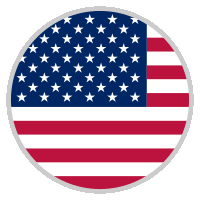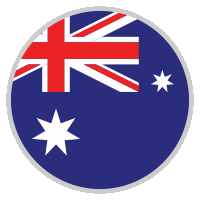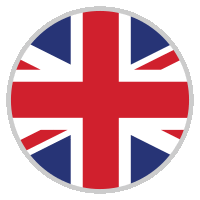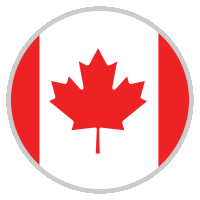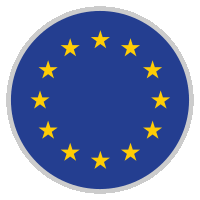Catalog No.
Product Name
Application
Product Information
Product Citation
- Betanin is a red glycosidic food dye obtained from beets
- Sukirtha Srivarathan, .et al. , J Food Compos Anal, 2023, 115: 104876
- Grewal PS, .et al. , Metab Eng, 2018, Jan;45:180-188 PMID: 29247865
- Tom Clifford, .et al. , Eur J Nutr, 2017, 56(3): 1245-1254 PMID: 26873098
- Kaimainen M, .et al. , Food Chem., 2015, Nov 15;187:398-406. PMID: 25977043
- Crystal violet is a triarylmethane dye. The dye is used as a histological stain and in Gram??s method of classifying bacteria.
- Indocyanine green is a cyanine dye used in medical diagnostics. It is used for determining cardiac output, hepatic function, and liver blood flow, and for ophthalmic angiography.
- Antti I Nykanen, .et al. , J Thorac Cardiovasc Surg, 2022, Mar 11;S0022-5223(22)00248-3 PMID: 35382935
- Lei Li, .et al. , ACS Nano, 2021, Jan 19 PMID: 33464827
- Adrian Rosenberg, .et al. , Mol Imaging, 2020, Jan-Dec; 19: 1536012120934965 PMID: 32609570
- Acriflavine is a fluorescent dye for labeling high molecular weight RNA. It is also a topical antiseptic.
- Cy3 NHS (Cyanine3 NHS ester) is a water-soluble and yellow emitting fluorescent dye for labeling amino-groups in biomolecules. Used to label soluble proteins, peptides, and oligonucleotides/DNA.
- Coumarin 30 is useful as laser dye. Efficient laser dye for pulsed and CW operation.
-
fluorescent dye
Dansyl amide is a fluorescent dye that is used in biochemistry and chemistry to label substances with the fluorescent dansyl group. -
fluorescent dye
Lucifer Yellow CH dilithium salt is a highly fluorescent dye that is useful in marking nerve cells. - Biotin-X-NHS is a compound used to attach biotin to primary amines under alkaline conditions (pH~8-9).
- Hoechst 33258 trihydrochloride is a cell dye for DNA quantitation.
- Xiao-Hong Guo, .et al. , Oncol Rep, 2021, Dec;46(6):253 PMID: 34643248
- Hoechst 33258 analog 5 is a analog of Hoechst stains, which are part of a family of blue fluorescent dyes used to stain DNA.
- Hoechst 33258 analog 6 is a anglog of Hoechst stains(Hoechst 33258), which are part of a family of blue fluorescent dyes used to stain DNA.
-
Blue fluorescent dyes
Hoechst 33342 analog is a nalog of Hoechst stains, which are part of a family of blue fluorescent dyes used to stain DNA. -
Blue fluorescent dyes
Hoechst 33342 analog 2 is a anglog of Hoechst stains, which are part of a family of blue fluorescent dyes used to stain DNA. - Hoechst stains are part of a family of blue fluorescent dyes used to stain DNA.
- Hoechst stains are part of a family of blue fluorescent dyes used to stain DNA. Hoechst 33258 is a cell dye for DNA quantitation.
-
cell-permeable blue fluorescent dye
Dihydroethidium is a cell-permeable blue fluorescent dye.- R Mahalakshmi, .et al. , Mol Biol Rep, 2022, Jan;49(1):463-476 PMID: 34739690
- Clofazimine is a rhimophenazine dye, originally developed for the treatment of tuberculosis, it has both antimicrobial and antiinflammatory activity, postulated mechanisms of action include intercalation of clofazimine with bacterial DNA and increasing levels of cellular phospholipase A2.
-
chromoendoscopy dye
Methylene blue (Basic Blue 9) is used as a dye in chromoendoscopy, and is sprayed onto the mucosa of the gastrointestinal tract in order to identify dysplasia, or pre-cancerous lesions. - Fluorescein biotin (FITC biotin) is a fluorescent biotin derivative and avidin and streptavidin ligand that contains a FITC fluorophore which displays excitation/emission maxima of 485/535 nm, respectively.
- Monodansylcadaverine (MDC) is a fluorescent marker for autophagic vacuoles. It is an autofluorescent substance incorporated into multilamellar bodies by both an ion trapping mechanism and interaction with membrane lipids, exhibiting a Stokes shift and increased relative fluorescence in hydrophobic environments.
- Erythrosin B is an artificial dye widely used in the food and textile industries. Erythrosin B is also a novel photosensitizer which has been used to develop animal models.
- 7-Amino-4-methylcoumarin is a fluorogenic reagent and antibacterial, antifungal agent. It os used as reference compound in enzyme assays.
- Digoxigenin is a cardenolide which is the aglycon of digoxin. Can be obtained by hydrolysis of digoxin or from Digitalis orientalis L. and Digitalis lanata Ehrh.
